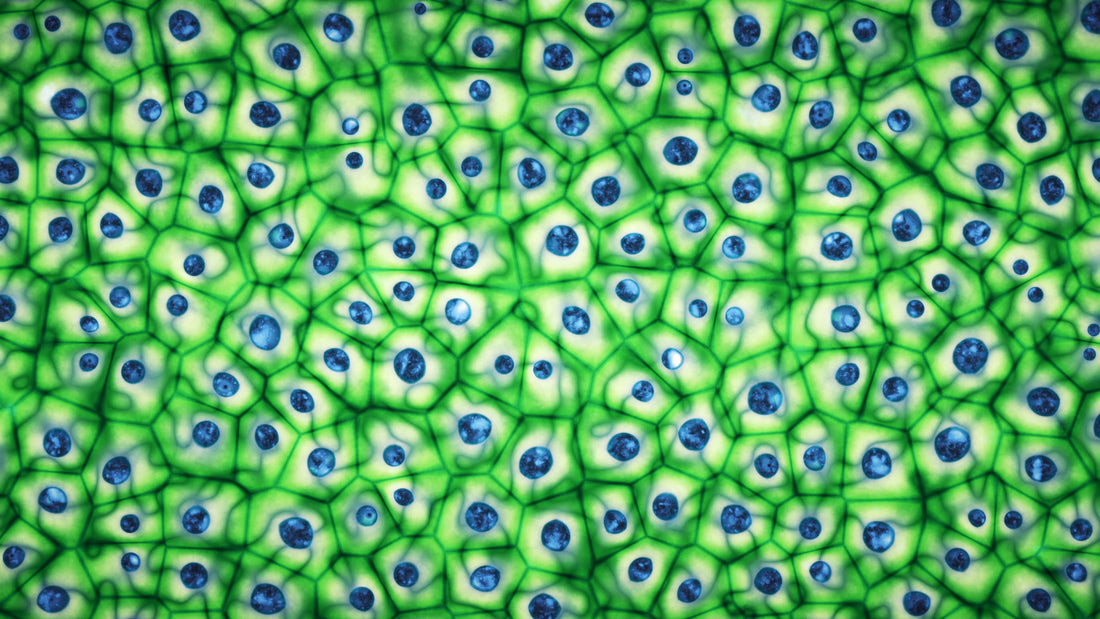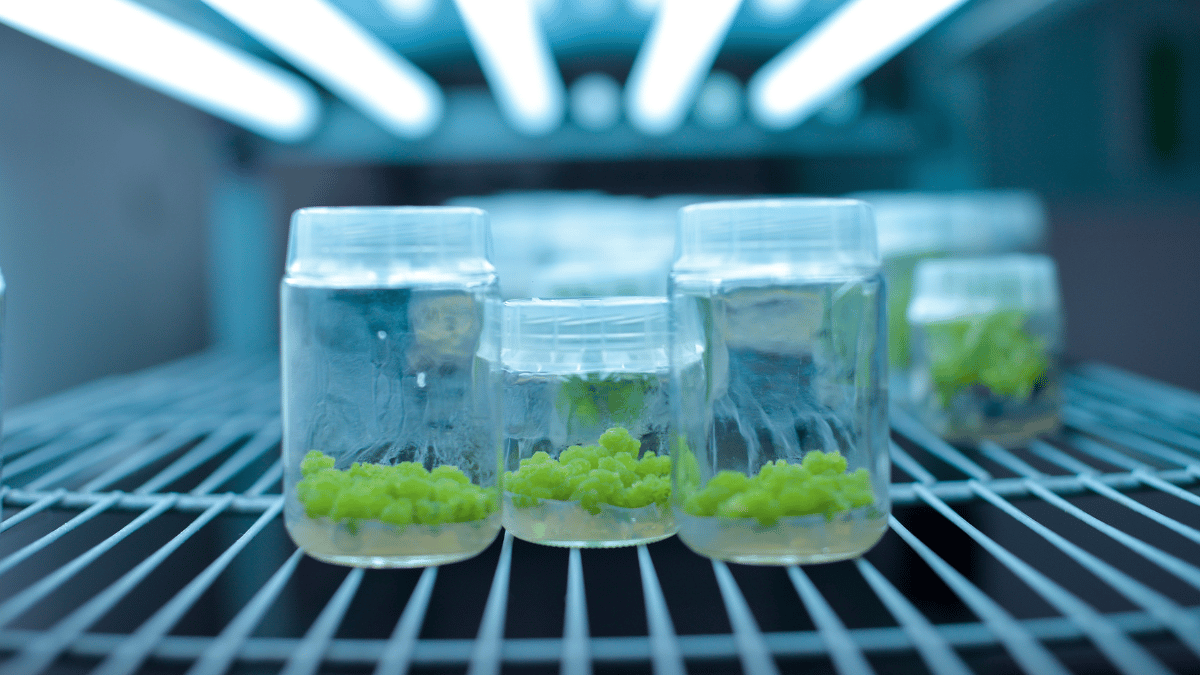
Production of Haploids from Microspore Culture


INTRODUCTION: HAPLOIDS
The process of production of haploid plants from anther or isolated pollen culture is known as androgenesis. Here, the male is the sole source of the genetic material in the embryo. The technique is helpful to breed new cultivar of especially economically important plants, such as cereals, vegetables, oils, and tree crops.
You can refer to the article “the techniques of haploid production” to learn about in vivo and in vitro techniques used to produce haploid cultures. In this article, we will be looking into the in vitro techniques of haploid production from microspore cultures.
Haploid production through androgenesis is a two-way path that includes direct and indirect androgenesis. The embryo developed through direct androgenesis mimics zygotic embryos, however, the suspensor and endosperm are absent. After 4-8 weeks of the appearance of embryos at the globular stage, plantlets emerge from the cotyledons (formed by anthers). This has been observed in members of tobacco (Solanaceae) and mustard (Cruciferae) families.
Embryo development through indirect embryogenesis undergoes irregular asynchronous divisions leading to callus formation. Then, the callus undergoes the process of organ formation that leads to the generation of haploids. This pathway has been observed in the species of cereals.
There are two approaches to haploid production from the male nucleus: anther culture and pollen culture--which are highlighted in this article. The plants grown using these methods should be kept in a controlled condition of temperature, light, and humidity.

Figure: Schematic diagram of the pathway of direct and indirect androgenesis.
Source: Farinha, Nelson. (2013). Pollen embryogenesis for rice plant production from selected genotypes cultivated in the Mondego river valley.
Anther Culture
The procedure to establish the anther culture of the plant is as follows:
- Select buds of the desired plant and surface sterilize them using a disinfectant.
- Excise anthers along with their filaments under aseptic conditions and place them on a sterilized plate.
- Crush an anther and stain it with acetocarmine to test the pollen development stage.
- If the correct stage is found, gently detach anthers from filaments and place them horizontally in the culture medium (in some species, attachment of even a part of filament with anthers affects the production of plants).
- Maintain anther cultures in alternating periods of light(12-18 h; 5000-10 000 lx m2) at 28℃ and darkness (12-6 h) at 22℃. However, species of some genus (like Brassica) are very sensitive to light and should be maintained in dark throughout.
- As the anthers respond, wall tissues turn brown and after 3-8 weeks, they burst open due to the pressure of developing callus or embryos.
- The embryos will germinate on the same media they were cultured or required to be transferred to another culture media.
- When the plantlets attain a height of 3-5 cm, transfer them to a rooting medium.
-
After well-developed rooting is observed, transfer the plants to sterilize potting mix in small pots or seed trays.

| Figure: A diagrammatic presentation of the steps of anther culture. |
Disadvantages of anther culture:
- Production of genetically different/heterogeneous plants.
- Production of a heterogeneous population.
- Asynchronous pollen development will lead to the suppression of younger grains by older grains due to the release of toxic substances.
- Plants derived from anther culture would not be purely of gametophytic origin.
Isolated pollen cultures
In 1972, the embryo development was induced in pollen cultures by using some nurse tissue (that provides nutrition to the cultures) or its extract. Sharp et al (1972) grew haploid clones of tomato plants by placing the isolated anther of the plant on small pieces of filter paper, kept over cultured anthers of the same species.
Similarly, wheat co-culturing of ovaries - which act as nurse tissue - with isolated pollen cultures results in embryo development. In cereals, the pre-culturing of anthers for 2-7 days promotes embryo development in isolated pollen cultures. After cold treatment, the pollen grains dehisce anther wall and release from the anthers, liberating pollens on the liquid medium. This technique is called the “float culture method”.
In 1975, Wenzel et al introduced the density gradient centrifugation technique to enhance the androgenic response from the pollen cultures. This method allows the separation of embryogenic grains from a mixture of embryogenic and non-embryogenic grains, obtained after crushing anthers. The steps of the technique are below:
- Collect anthers of the specific plant at the proper stage of development.
- Gently macerate or soak and soften the anthers to obtain a suspension of pollen grains.
- Remove debris by continuous filtration and centrifugation of the suspension.
- Then layer the suspension on 30% sucrose solution and centrifuge at 1200 g (here g stands for gravity) for 5 minutes.
- You can observe the band of androgenic pollen grains at the top of the sucrose solution.
Some scientists use 55% Percoll and 4% sucrose solution, instead of 30 % sucrose for the centrifugation process. It has been observed to highly enhance the androgenic response from the pollen grains.

Figure: Schematic presentation of the steps of pollen culture.
Source: https://www.biologydiscussion.com/plant-tissues/p...
What are the advantages of pollen cultures over anther cultures?
- Pollen culture is a haploid and single-cell system.
- Pollen grains bearing androgenic response can be isolated by using the density gradient centrifugation method.
- Production of a homogeneous population.
- Production of genetically identical plants.
- Pollen grains can be easily modified by exposing them to mutagens or genetic engineering.
- Pollen culture is 60 % more efficient than anther culture in terms of embryo production.
The techniques of anther culture and pollen culture have been very popular in haploid production. However, only 135 species have been studied for haploid production using these techniques. So, its expansion in the production of some more economically important haploids is still required.

Figure: A schematic presentation of the steps of anther and pollen cultures. (A summary of the article).
Source:https://www.toppr.com/ask/question/haploid-plant-cultures-can-be-obtained-from/
References
- Haploid production. (1996). Studies in Plant Science, 167–213. DOI:10.1016/s0928-3420(96)80009-7
- Farinha, Nelson. (2013). Pollen embryogenesis for rice plant production from selected genotypes cultivated in the Mondego river valley.
- https://www.biologydiscussion.com/plants/process-o...
- https://www.biologydiscussion.com/plant-tissues/pollen-culture/pollen-culture-meaning-and-advantages-biotechnology/61368
- https://biologyreader.com/anther-culture.html
- https://naldc.nal.usda.gov/download/42088/PDF
- https://www.toppr.com/ask/question/haploid-plant-c...
Blog Categories
View by Level
Popular Blogs

Callus Culture: Definition and Applications
Introduction Tissue culture is not just one technique! Yes, you heard right! As you know, tissue culture is an advanced...
Read More
6 Plant Tissue Culture Books to Keep Learning
Introduction Most of us are fans of books when it comes to learning a topic in detail and in a...
Read MoreSubscribe to Our Newsletter








Join the conversation
Your email address will not be published. Required fields are marked